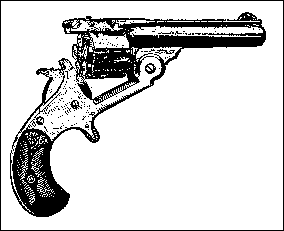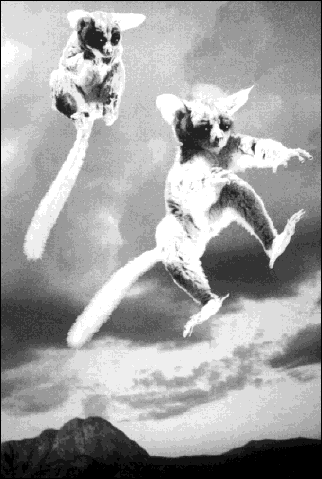Meant for Me
A Memoir
Jan Reid
(Broadway)

He was in Mexico City to watch a boxing match with one of his young protégés, Gabriel Chavez. Reid and a couple of his friends were on their way to the Plaza Garibaldi, but were kidnapped in a taxi (as often happens in Mexico City). At one point, Reid tried to throw a punch at the kidnapper, but missed, and was shot with a .38. The bullet tore into his arm and torso, stopping just short of his spinal cord.
He was given excellent treatment, both in Mexico and Houston --- but there was some doubt as to whether he would ever walk again:
The bullet meant I was a cripple. But I could wiggle my toes; some of the wiring still worked. I had a vote in how crippled I would be. When Dr. Clifton raised [the] MRI and said, "There's nothing on here that says you can't walk," something in me decided I would.
With the best of physical therapy available --- Reid gradually recovered, and soon enough returned to his old love of boxing, going to the gym and regularly hitting a punching bag.
I planted my feet and began to try to recapture the rhythm of working the pear-shaped bag...My hand speed would never dazzle anybody, but I loved standing up with nothing supporting me and seeing how long I could keep it going. Ta-tun-ta-ta-tun-ta-ta.
The book ends with his return to the place where he was shot. He says of the people who helped him that night,
I wish they could know that in time I got up and walked away from his bullet. In my way I won that fight.
Those of us who are disabled often read books like The Bullet Meant for Me to see how others handle our day-to- He gives hints about sexual challenges and bowel and bladder problems --- but little else. He spends a few pages explaining how his pain at times threatened to overwhelm his relations with his wife. At one point, during rehab, he even refers to himself as "a gray-haired man in diapers --- not the most virile and rousing self-image." But then we quickly get to his miracle recovery: I was discouraged. I thought I would never walk again. But then...another patient said to me, "If you want to do it you can do it." In evaluating his future, Reid calls up a bit of Tex-Mex macho: Everything before me was a black hole of unknowing and fear. I didn't know if I were brave enough to overcome and find dignity in what lay ahead. I didn't know if I were Finally, he says, "I had a vote in how crippled I would be." When Dr. Clifton raised [the] MRI and said, 'There's nothing on here that says you can't walk,' something in me decided I would." Those of us in the disability world are well familiar with this "force of will" school of thinking. Briefly, it goes like this: All of us who have had a disabling accident or a debilitating disease have a choice. One can escape by drawing on internal willpower. Those who do so are going to be cured --- but it takes a combination of determination and guts to do it. Those of us who are in some way lacking --- who don't have this strength of purpose --- will spend the rest of our lives in bed, on a gurney, or in a wheelchair. We just didn't have The Right Stuff.
This is a dubious view of the realities of disability. When it turns up in books by those who are not disabled, it is pernicious. When it appears in the writings of those who are disabled --- it's a scandal. In a recent interview in New Mobility Magazine, the artist Chuck Close, a quadriplegic, referred to this as the "blame-the- In rehab I saw people with the greatest attitudes who struggled every day, worked so hard in PT, and never got one iota better. Then there'd be somebody else with the worst attitude in the world --- lazy, nasty, whiny, wouldn't work hard --- and they got better and walked out. To suggest that if somebody only had a different attitude they'd get better is just this side of criminal.
Reid's astonishing recovery came from blind down-home luck --- the minimal nature of his medical trauma. The bullet never penetrated his spine. After the initial shock had worn off, there were enough nerves left so that he could recover almost entirely. This single fact is what gave him his amazing success --- not his iron will or his being "man enough." This is not to negate the genuine pain that Reid went through. His story, however, would be more powerful without the sports mentality that runs him, that makes him say, at the very end, "I won that fight." None of us can or will win battles launched against our own bodies. The best we can hope for is to achieve some peace in living with our new-found physical state.
man enough. [His emphasis]
Avon Lady
And Other Stories
Lorraine López
(Curbstone)
He didn't think sorry would do it. Somehow he didn't think a gelatin mold would compensate either, and he was more than a little sensitive to the notion that they --- based on his rough encounter with the deceased --- might be eye-
But he relents, and delivers the mold, and one of the young Hudanish men thinks he's the pizza delivery boy, but then finds out that it's Jello salad from the boy that shot his dad, and he says, "How droll!" and pulls out a bottle of champagne, and invites Jonathan to drink some with him, and the mother comes in and thanks him, saying that she's been waiting for seven years to be with her son --- the champagne bearer --- but the old man wouldn't allow him in the house. She says that with Mr. Hudanish gone, she is "born again...you have given me back my son!"
In "Walking Circles," Elaine goes to the hospital with her daughter Tina, heavy with child from her recently deceased boyfriend, Terrell. Trouble is, Terrell's mother is there too --- a heavy, smelly woman who wants to be around for the birth.
The picture of the three --- Elaine always hesitant, always trying to please; the mother of the dead man --- pushy, stony, unwilling to get out of the way; and Tina --- nervous, excitable, changeable --- is finely wrought. Each of the three is perfectly realized, perfectly formed --- so that at the end, when Terrell's mother is shooed out, the baby is delivered and handed to Elaine, she --- in that moment of birth --- has an epiphany. She saw "how it was more important for a daughter to get the right mother than for a mother to have the kind of daughter she wanted."
Tina, along with some of her friends, are doing witchcraft ceremony there at bedside. "Soon they would place Tina on the outside; Elaine was certain of that. And Tina would make her own circle with the baby. This thing that Elaine feared could overwhelm and ruin her daughter might be the one thing that could save her."
She would lose this baby again and again. But for now, all she wanted was to hold on --- just for a moment --- before bringing the baby to the others by the bed.
When López is good she is very very good. When she is not at the top of her form, she isn't terrible --- she's just a bit off key. The two stories we have described are wonderful. The tale of Elaine at Terrell's funeral is a kick. If for no other reason, I'm the Avon Lady is worth your trouble in order to see a budding, talented writer starting to hit her stride.
Nature
An Astonishing
Exploration of
Nature's Strangest
Behavior
John Downer
(Firefly)

The poison- Darwin frogs raise their babies inside their vocal sac, and the picture of one doing so is quite revolting --- as is the shot of the surinam toad which has these black gooey things that look like vomit all over its back. It turns out that they are baby surinam toads. Male clownfish can change their sex at will. Scorpions have a courtship dance which is quite a sight if you are interested in having a night in the sack with scorpions. The roadrunner can get up to twenty-six mph --- and a crocodile can run so fast that it "becomes airborne." All these facts along with over 100 pretty pictures in color are to be found in Weird Nature. Our only complaint is that it's all facts, scarcely anything beyond "Believe It or Not." We once remember hearing Jacob Bronowski talking about a tick that feeds on cows, horses, and other ruminants --- a tick that has the ability to stay perched on the tip of a bush in the field for as long as twenty years until just the right conditions occur, when it's long-awaited lunch comes on the scene, so that it becomes activated for a single jump which will contribute to its survival or its death. Bronowski then went on to describe the evolutionary sequence that would create this highly specialized beast, and then he made some artful leaps of logic to relate it and its life cycle to all of us (in fact --- he built a whole series of lectures on this tiny one-shot- It would have been nice if Downer could have given a bit more space to philosophic musings about why, for instance, bowerbirds steal coins and bits of pottery to attract mates, or why the sea hare can be either male or female (or both), or why the tree-dwelling antechinus may have sex day and night for two weeks --- at which times the male mouselet falls to the ground and up and dies. What do these strange behaviors mean in the evolution of that species, and for all the rest of us?